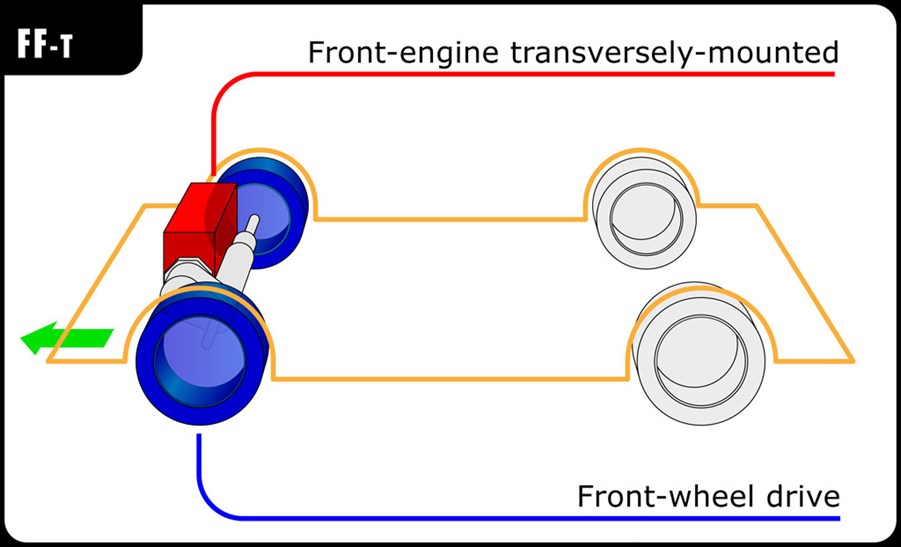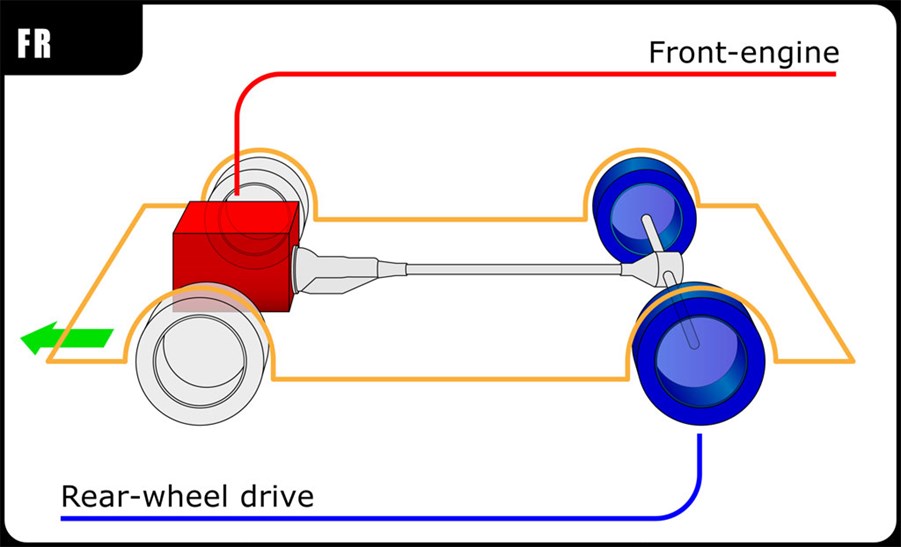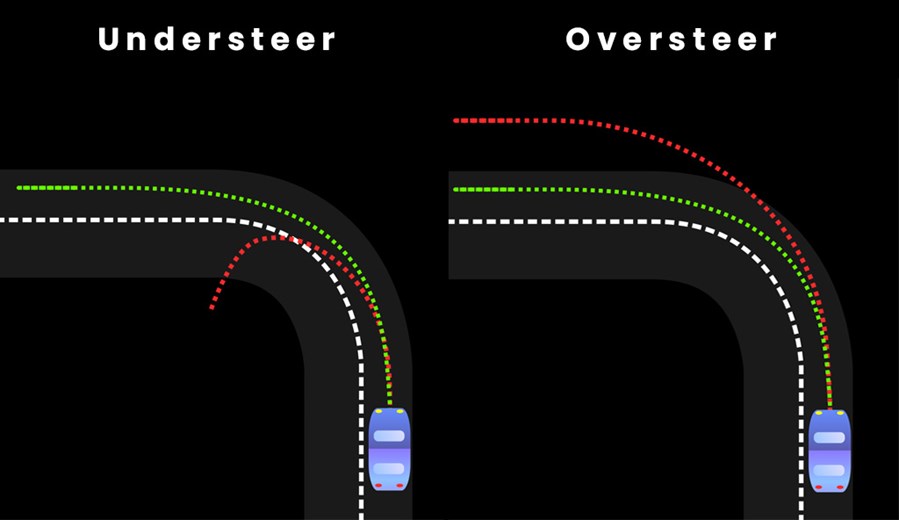Most of the memorable cars from the 20th century were made with a rear-wheel-drive setup. It was an era of sports cars which purists look back on fondly to this day. However, just because it was popular back then, is it still the best today?

Front-Wheel Drive
In the UK, front wheel drive was popularised by the original Mini. By mounting the engine at the front of the car as well as the unit its-self being positioned sideways, the front wheels could be powered much closer to the engine, which meant a prop shaft leading to the rear wheels was not required therefore saving a lot of leg room for the rear passengers. Popular in personal lease cars.
The downside to a front-wheel-drive setup is the risk of understeer, which is where the front wheels will lose grip if you harshly apply the brakes whilst travelling too quickly through a corner.
Some example front-wheel-drive cars (FWD) are the Mercedes A-Class, Volkswagen Golf or Ford Focus. While FWD cars are commonly associated with the hatchback segment, Saloon or SUV models can also be front-wheel drives such as the Audi A3, Volvo S90 or Range Rover Evoque.

Rear Wheel Drive
On the other hand, a rear wheel drive car traditionally has its engine at the front but the power is put down by the rear wheels and a popular version for business lease cars due to the German affiliation.
As the front wheels don't have the added role of providing power, they serve just the one purpose which is controlling the car.
Weight distribution is also spread more evenly in a rear-wheel-drive car as in a front-wheel-drive setup the weight is biased to the front of the car. Many drivers prefer this feeling of 'balance' over front-wheel drive which is why purists also don't often view four-wheel drive cars as true sports cars despite offering power from both sets of wheels.
While engine placement in a rear-wheel-drive car is usually at the front, the setup also allows for a car to have a mid or rear-engine setup, for example, many of the performance Porsche models are both rear-engined and rear-wheel drive.
Rear-wheel-drive cars handle better for this reason, but they are prone to oversteer, which is where the back end of the car spins on the cars axis due to too much power being sent to the rear wheels or the weather conditions are too wet/slippy for the amount of power being delivered. The Drifting motorsport is based upon this principle.
BMW is known for the majority of their range being rear-wheel drive (RWD) with the exception of the all-new 1 Series, however other manufacturer models which have rear-wheel drive setups are the Mercedes C Class, Alfa Romeo Giulia or Mazda MX-5.

What Do You Need To Consider?
In adverse weather conditions like rain or snow, front-wheel-drive cars are typically the safer to drive as the risk of skidding is drastically limited, however, you still have to watch out for the transfer of weight regardless of what drive train your car has.
Downshifting too early in a front-wheel-drive car will cause the car to jerk forwards which sends all of the weight to the front of the already front-heavy car, so you'll continue going forwards even if you are trying to turn the wheel like in the example picture below.
Grippier tyres will help however not all tyres behave the same in the rain or snow, snow tyres are specially created to pack snow into the tread of the tyre. You can learn more about the different types of tyres in our in-depth guide.
There's a common myth that four-wheel-drive cars are best in the snow, however, we took a look into this and debunked the myth in our article here. Despite that though, we still chose the Land Rover Discovery as our number one best winter car but not necessarily for its driving capabilities.
Should You Go For FWD Or RWD?
If you just want to get from A to B then you should go for a front-wheel-drive car. The actual cost to manufacture this type of car is usually lower so you'll be saving some money on the list price plus you'll have that added bit of practicality in the rear seats by not having a driveshaft eating away at the legroom.
If you enjoy driving then you should opt for rear-wheel drive, the driving experience will feel much more rewarding but do bear in mind in adverse weather conditions you do have to stay alert when going through bends. You will also benefit from a better turning circle (unless we're talking about the likes of a long-wheelbase Mercedes S Class) which makes parking in tighter spaces much easier.
